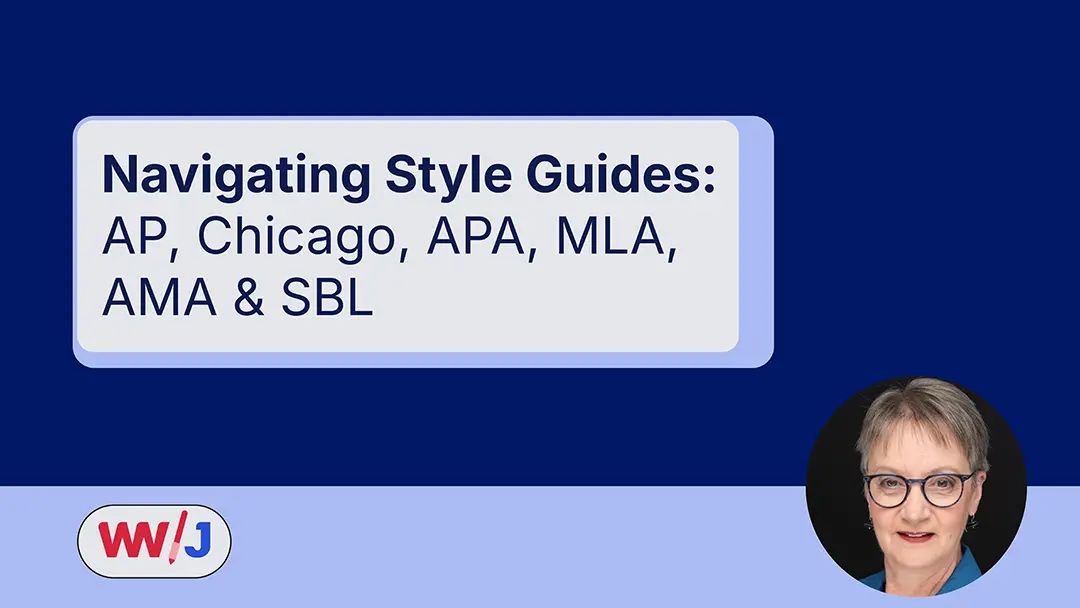Introduction
Whether you’re drafting a news article, a research paper or a book chapter, your work needs a set of conventions to follow. Style guides provide those conventions. They spell out rules for capitalization, punctuation, citations and even ethical considerations so your writing is consistent and professional. Unlike grammar handbooks that dictate how language should be used, most industry style guides are descriptive; they codify common usage in specific fields[1]. Choosing the right guide is essential because no single manual rules over all of English[1].
What Is a Style Guide?
A writing style guide is a collection of standards for grammar, spelling, punctuation, formatting and usage. Historically published as print books and now available online, these guides help writers and editors answer questions that arise during drafting and editing[1]. They establish consistency across a publication or industry, ensuring that a news organization, journal or academic discipline speaks with one voice[1]. Many style guides are descriptive, reflecting how language is commonly used, while others—such as house style sheets—are prescriptive, dictating how a brand wants to appear[1].
Major Style Guides
The English‑language landscape features dozens of guides. The following are among the most widely used. Each serves a distinct audience, so understanding who uses which guide will help you choose the right one.
Associated Press (AP) Stylebook
The Associated Press Stylebook is the definitive guide for journalists and many bloggers. It publishes a biennial print edition and maintains the AP Stylebook Online[1]. AP style covers grammar, punctuation and usage along with topical guides for newsworthy subjects, including recommendations on gender‑neutral terminology[1]. Because the Associated Press is a news wire service, its style has become the standard for most newspapers and many content‑marketing teams[1]. Editors update the online guide throughout the year and release a new print edition every other year, often unveiling changes at the ACES editing conference[1].
Chicago Manual of Style (CMOS)
Published by the University of Chicago Press since 1906, the Chicago Manual of Style (CMOS) is a comprehensive guide for commercial and academic publishing[1]. It covers grammar, spelling, punctuation and usage and offers extensive guidance on manuscript formatting and two citation systems: notes‑bibliography and author‑date[1]. Chicago style is favored by book publishers in both fiction and nonfiction as well as many humanities journals[1]. The press has issued 17 editions (the most recent in 2017), typically updating the print manual every seven years while continuously updating the online version with Q&As and topical notes[1].
Publication Manual of the American Psychological Association (APA)
The APA Publication Manual originated in 1929 and has evolved into a set of standards that make scientific writing easier to comprehend[1]. It covers grammar, punctuation, spelling and usage, and it is renowned for its in‑text citation and reference list format[1]. APA style also includes ethical guidelines for research and instructions on structuring academic papers. Scholars and journals in social sciences, health care and many natural sciences rely on APA style[1]. Seven editions have been published; a new version appears roughly every decade, with updates reflected on the APA Style website and blog[1].
MLA Handbook
The MLA Handbook began life in 1951 as a style sheet for the Modern Language Association and has expanded into a widely used guide for writers and students in language and literary studies[1]. It focuses on citation and formatting; unlike other manuals, it offers minimal guidance on word usage or mechanics[1]. Students and scholars in English and other humanities fields often use MLA for citing sources and formatting papers[1]. The handbook has seen eight editions, with the latest released in 2021, and new print editions come out every three to five years[1].
AMA Manual of Style
The AMA Manual of Style is the go‑to guide for writing in medicine and biomedical sciences. The American Medical Association’s documentation style is widely used in health sciences and scientific publishing[3]. The manual provides standards for grammar, usage and citation, along with guidance on references and formatting; medical journals and research authors follow AMA style to ensure clarity and consistency in highly technical writing.
SBL Handbook of Style
The Society of Biblical Literature (SBL) Handbook of Style is the go‑to guide for biblical studies and related disciplines. The second edition is thoroughly updated to reflect current practices among scholars, editors and publishers[2]. It offers new subject matter that fills gaps in the first edition, expanded abbreviation lists and detailed instructions for citing electronic sources[2]. Because it provides essential guidance for writing and publishing in biblical studies, scholars working with ancient Near Eastern, biblical and early Christian texts rely on the SBL handbook to format footnotes and bibliographies.
Other Guides and Supplements
In addition to these heavyweights, numerous specialized guides fill niche needs. Journalists may consult the *New York Times Manual of Style and Usage*, the *BuzzFeed Style Guide* for digital media or the *Diversity Style Guide* for inclusive language[1]. Scientific writers may refer to the National Library of Medicine (NLM) style guide or the *Scientific Style and Format* guide produced by the Council of Science Editors[1]. Choose these supplements when your field has ### When to Use Each Style
Most writers encounter four commonly used guides—AP, Chicago, APA and MLA—and each corresponds to a distinct type of writing[1].
AP – Journalism: AP style is standard in journalism and many blogs and content‑marketing teams[1].
Chicago – Publishing and history: Chicago style is preferred by book publishers and historians[1].
APA – Social sciences: APA style is widely used in the social sciences, health care and related disciplines[1].
MLA – Language and literature: MLA style is favored in language and literature studies[1].
MA – Medicine and science: The AMA Manual of Style is widely used in medicine, health care and scientific publishing[3].
SBL – Biblical studies: The SBL handbook is the standard for biblical and ancient Near Eastern scholarship[2].
The general rule is to follow the style preferred by your field or by the journal, publisher or organization you’re writing for. If you’re uncertain, ask your editor or instructor. When writing for yourself or your own brand, pick one guide and stick to it to maintain consistency.
Implementation Tips
Consult the official manual. Style guides change over time. AP releases a new print book every other year[1], Chicago updates roughly every seven years[1], APA revises about every decade[1] and MLA updates every three to five years[1]. Using the latest edition ensures you’re following current standards.
Create a style sheet. For long projects or for work that blends multiple styles, maintain your own list of decisions—e.g., whether to use Oxford commas, how to spell certain terms or how to handle capitalization. This supplements the official guide and helps collaborators stay consistent.
Use specialized guides when necessary. If you write about health, consult AMA. For inclusive language, supplement your primary guide with resources such as the Diversity Style Guide[1].
Stay flexible but consistent. Some editors treat style manuals as strict rulebooks; others see them as guidelines. Make thoughtful choices that fit your audience and purpose, and then apply them consistently throughout your work.
Real‑World Examples
Associated Press (AP)
| News organizations and blogs
| Newspapers such as the *Chicago Tribune* and content marketing teams adhere to AP style for uniformity across stories and news releases.
Chicago Manual of Style (CMOS)
| Book publishers, humanities journals
| Many publishers of fiction and nonfiction use CMOS for manuscript formatting and citations; academic historians often follow Chicago’s notes‑bibliography system. |
APA Publication Manual
| Social sciences, health care, education
| Research articles in psychology journals and nursing dissertations follow APA for in‑text citations and reference lists. |
MLA Handbook
| Language and literature studies
| English literature essays and modern language research papers follow MLA for source citations and paper format. |
AMA Manual of Style
| Medical and scientific publishing
| Journals such as *JAMA* and *The New England Journal of Medicine* use AMA style for references and terminology. |
SBL Handbook of Style
| Biblical and theological studies
| Scholars writing on ancient texts or theology use SBL to format footnotes and bibliographies. |
Conclusion
Style guides are essential tools for writers and editors. They provide a framework that ensures your work meets the expectations of your audience and industry. Whether you’re crafting a scientific paper, a newspaper article or a thesis, selecting the correct guide—AP, Chicago, APA, MLA, AMA or SBL—will help you communicate clearly and professionally. Stay current with updates, supplement with specialized guides as needed and maintain your own style sheet to capture decisions unique to your project.
FAQ
Q: Do I really need to buy the official style guide?**
A: In most cases, yes. While summaries like this article offer an overview, the full manual contains rules for thousands of specific scenarios. Students can often access guides through library subscriptions.
Q: Can I mix and match elements from different guides?**
A: For most projects, pick one primary guide and stick to it. Mixing citation formats or punctuation rules can confuse readers. If you need to borrow a rule (e.g., using the AMA’s recommendations for inclusive language), document that choice in your style sheet.
Q: What’s the difference between Chicago’s notes‑bibliography and author‑date systems?**
A: The notes‑bibliography system uses numbered footnotes or endnotes for citations with a bibliography at the end. The author‑date system uses parenthetical in‑text citations and a reference list. Choose based on your discipline or publisher’s preference.
Q: Are there style guides for blogging and online writing?**
A: Yes. Beyond AP style for journalism, guides like *BuzzFeed Style Guide* and *Conscious Style Guide* address tone, social media usage and inclusive language for digital platforms[1].
Sources
[1] Dana Sitar, “What Is a Writing Style Guide, and Which One Should You Use?” *The Write https://thewritelife.com/writing-style-guide/
ehttps://thewritelife.com/writing-style-guide/
[2] “SBL Handbook of Style,” Society of Biblical Literature (SBL), describing the second edition’s updates and its role as the essential style manual for writing and publishing in biblical studies and related fields.
[3] “AMA Manual of Style,” *Wikipedia*, describing the AMA style guide and noting that it is widely used by many scientific journals including medical, nursing and health care journals.




